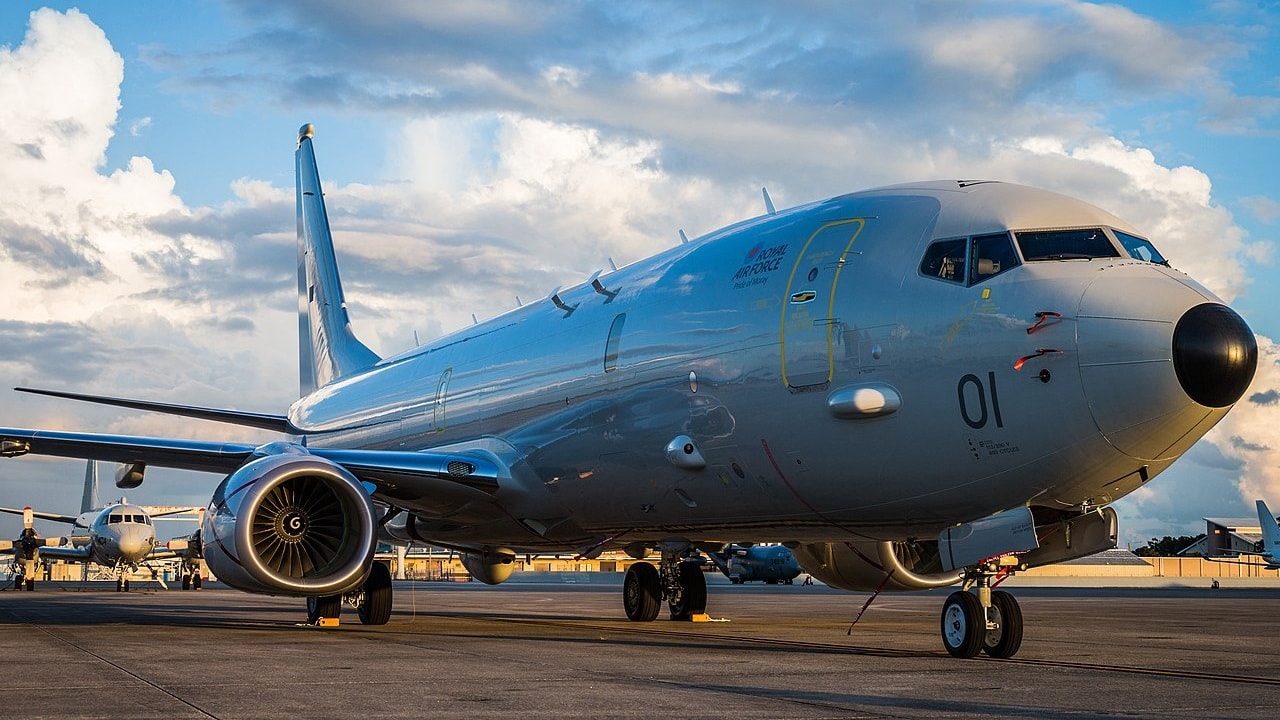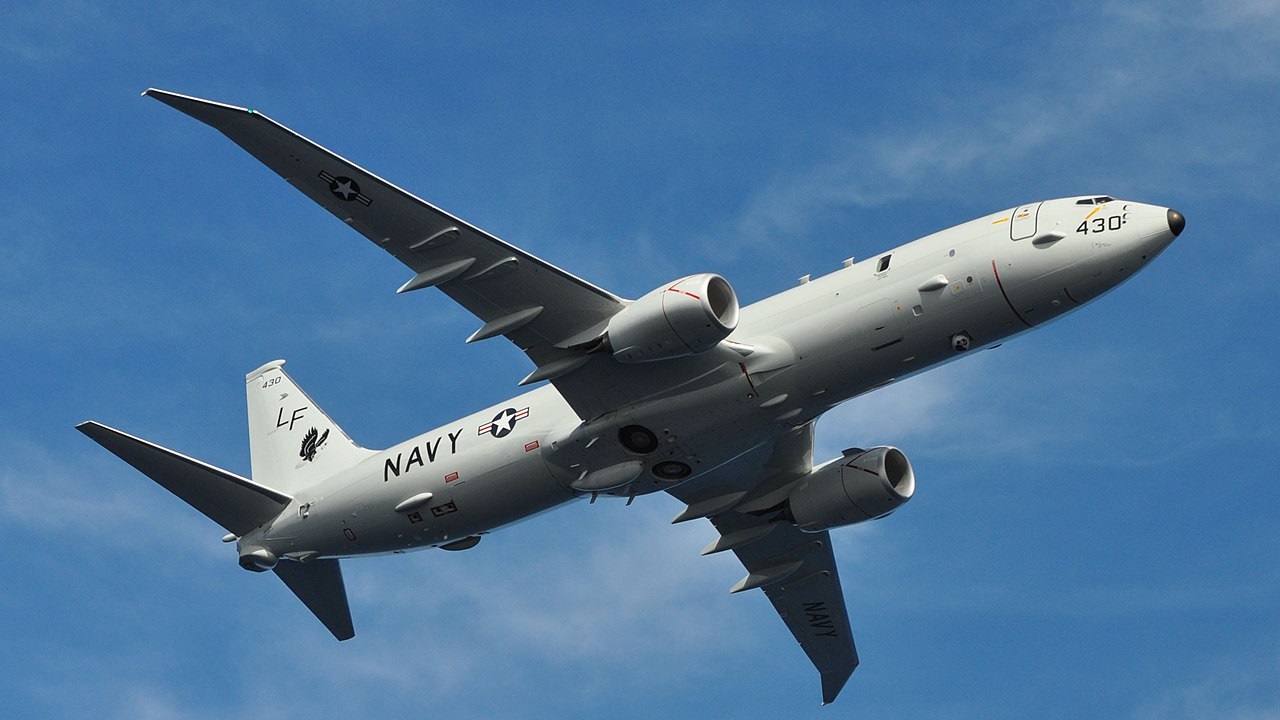Article Summary: The U.S. Navy’s P-8 Poseidon is a formidable sub-hunting and surveillance aircraft, playing a crucial role in tracking Chinese military activity in the Pacific. Equipped with 129 sonobuoys, torpedoes, and harpoon missiles, the Poseidon can detect and engage enemy submarines at vast distances.
Key Point #1 – Its AN/APY-10 radar and electro-optical cameras provide real-time intelligence, while its high-altitude endurance allows it to patrol for hours. Operating within the U.S. Navy’s “Fish Hook Undersea Defense Line,” the Poseidon ensures maritime dominance, countering China’s naval expansion.
Key Point #2 – As tensions rise in the Indo-Pacific, the Poseidon remains a key asset in America’s strategic deterrence.
P-8 Poseidon: The Sub-Hunting Aircraft That Keeps China in Check
The surveillance, sub-hunting, and lower-flying elements of a P-8 Poseidon attack aircraft make it a non-stealthy larger potential target.
Yet, its collection of technologies has proved tactically relevant for many years.
The P-8 sub-hunting aircraft was the platform that obtained the video of Chinese “land reclamation” in the South China Sea years ago.
Many are likely to recall that this was known as a “phony island building” enterprise designed to help advance the People’s Republic of China’s (PRC) territorial claims in the region. The P-8 footage was able to show these activities to the world in an effort to garner international support for a China deterrence effort.
While drones and satellites can be significant when tracking enemy submarines, a P-8 aircraft introduces a suite of technologies and surveillance systems not present on other platforms.
Sub-Hunting Sonobuoys
The most significant margin of difference between unarmed drones, lower-flying helicopter surveillance platforms, and the Poseidon is the ability to search for submarines beneath the surface with Sonobuoys.
The P-8 can operate as many as 129 sonobuoys, travel at high speeds of more than 500 miles, fly at higher, safer altitudes, and lower sub-hunting technologies undersea.
Navy developers explain that the Poseidon can operate on 10-hour missions that range from 1,200 nautical miles.
More dwell time capacity, fortified by high speeds, seems to position the Poseidon well for covering wide areas in search of “hidden” Chinese SSBNs.
Torpedoes & Harpoons
Also, as opposed to unarmed surveillance nodes, the Poseidon carries harpoons and torpedoes in position to attack PLA submarines that travel within range of the weapons.
Alongside its AN/APY-10 surveillance radar and MX-series electro-optical/infrared cameras optimized to scan the ocean surface, the Poseidon’s air-parachuted sonobuoys can find submarines at various depths beneath the surface.
The surveillance aircraft can operate as a “node” within a broader sub-hunting network consisting of surface ships, unmanned surface vessels, aerial drone-mounted maritime sensors, and submarines.

P-8 Poseidon. Image Credit: Royal Navy.
As part of its contribution to interconnected sub-hunting missions, the Poseidon can draw upon an Active Electronically Scanned Array, Synthetic Aperture Radar, and Ground Moving Target Indicator.
By lowering hydrophones and a magnetic compass to a predetermined depth, connected by cable to a floating surface radio transmitter, Poseidon sonobuoys can convert acoustic energy from the water into a radio signal sent to aircraft computer processors, according to a June 2018 issue of “Physics World.”
Undersea Defense Line
Also, Poseidon-dispatched sonobuoys can contribute to the often discussed “US Navy Fish Hook Undersea Defense Line,” a seamless network of hydrophones, sensors, and strategically positioned assets stretching from coastal areas off of Northern China down near the Philippines all the way to Indonesia, according to an essay from the Carnegie Endowment for International Peace, called “China’s Nuclear Ballistic Missile Submarines and Strategic Stability.”

A US Navy P-8 Poseidon, tail number 431, on approach at Tinker AFB in Oklahoma City, Oklahoma on April 15, 2015.
About the Author: Kris Osborn
Kris Osborn is the Military Technology Editor of 19FortyFive and President of Warrior Maven – Center for Military Modernization. Osborn previously served at the Pentagon as a highly qualified expert in the Office of the Assistant Secretary of the Army—Acquisition, Logistics & Technology. Osborn has also worked as an anchor and on-air military specialist at national TV networks. He has appeared as a guest military expert on Fox News, MSNBC, The Military Channel, and The History Channel. He also has a Masters Degree in Comparative Literature from Columbia University.

